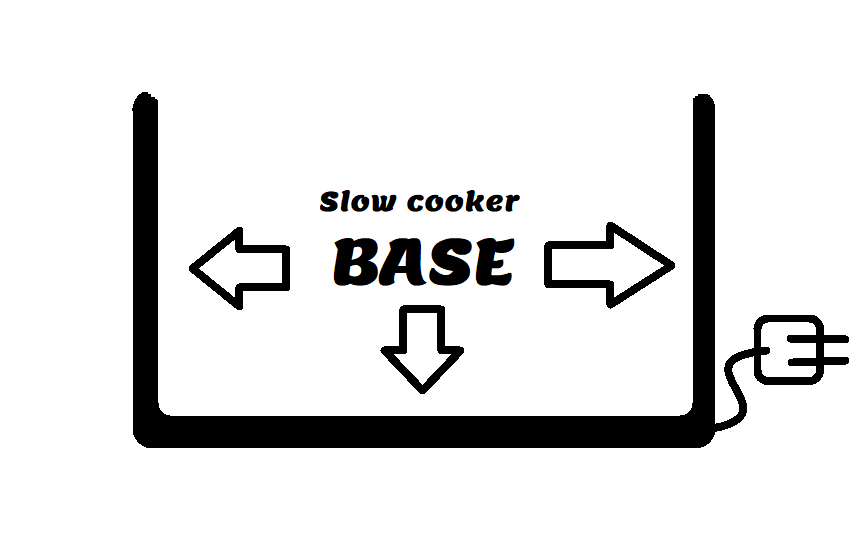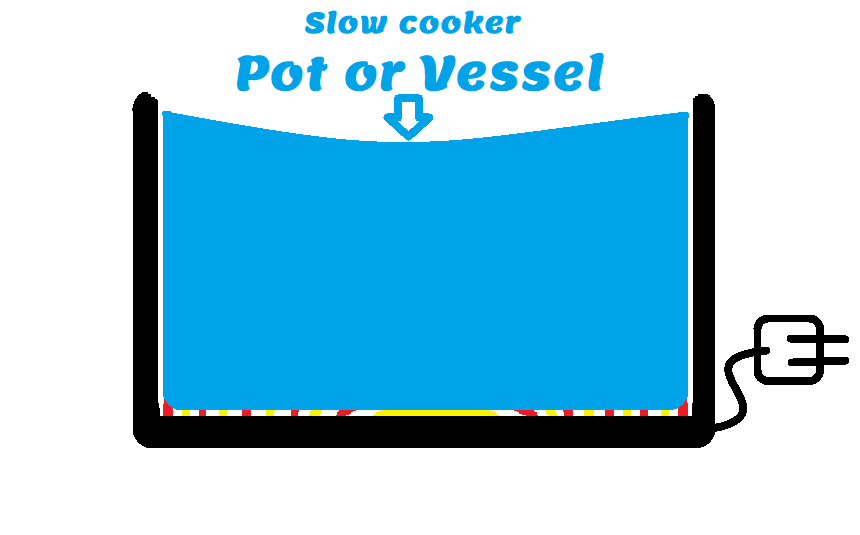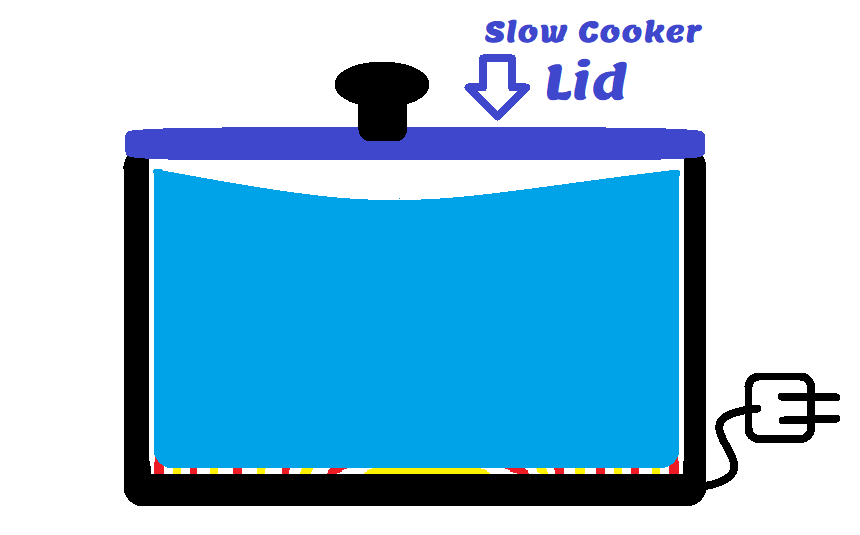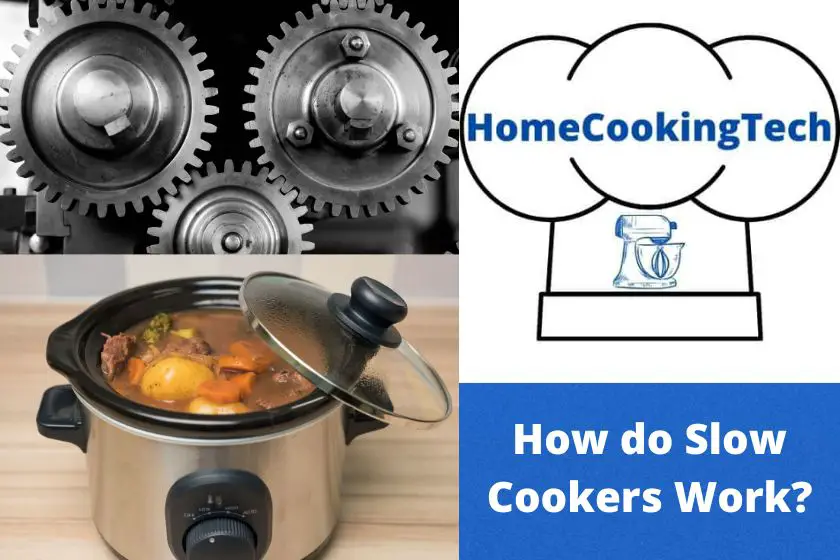You have most likely landed on this page because you want to know how do slow cookers work. As the whole story might be a bit lengthy, as I try to do into all the details, let me give you a quick summary, so you can go to your loved ones and wow them with your knowledge.
A slow cooker is a pot that slowly heats up and cooks the ingredients. It does so over a long period, by keeping the temperature under 212°F (100°C) otherwise called a simmering point. The process allows ingredients to break down, bond together, and provide a deep flavor experience. Cooking this way is regarded as a healthier and more hands-off option.
That’s the whole business in a few sentences. If you are interested in more details, like how are all slow cooker parts contributing to the final product, materials used, what is happening inside the pot, or pictures, read on. There is a lot of ground to cover, so let’s get to it, shall we?
If you are looking for a slow cooker, you can get your own top-line one on Amazon.
History of slow cookers
I know history might be a bit boring, but I will try to make this fun, quick and exciting, as always. Jews. Specifically, one Jewish grandmother gave inspiration to the whole slow cooker business. It was initially invented by Irving Naxon in 1938 while trying to re-create his grandma’s cholent stew.
This overnight stew is typically started on Friday afternoon and allowed to cook overnight to be eaten at noon on the Sabbath. Amid World War II, Irving’s invention at the time called ‘Naxon Beanery All-Purpose Cooker‘ has not gained as much traction as expected. Even though it was a perfect fit for lower-income households.
Now imagine America in the 1970s. Olivia Newton-John and her If not for you is blasting from the radio. The country is in turmoil. The ongoing war in Vietnam fights for equality for gays, lesbians, African Americans, Native Americans, and others. Everything is changing. Also, the owner of a patent for a slow cooker changed. Rival Manufacturing Co. bought the Naxon’s invention. And a year later, in 1971, the company released its new rebranded and a bit bigger Crock-Pot. Sizeable enough for the whole family.
The rebranding and size increase started a fire under the pot. Everybody was enjoying the hands-free, one-pot meals that were tender and delicious while cutting down on prep time. Marketing was targetting women at the time, as they were more and more working outside their houses. It was a form of liberation, as a woman could start cooking in the morning and come home to an almost finished meal, while at the same time keeping the family healthy. Why and how I will try to explain below.
Parts of a slow cooker
Why are the parts of a slow cooker important? What do they bring to the plate? What materials were and are used today? And how they all work? This and much more, I would like to tell you now.
The base

We are going from the bottom to the top, as any good cook would. We are covering all our bases (pun intended).The base or the body of a slow cooker, if you like, is holding the whole magic together. Usually is made out of layers of iron and other metals to be able to withstand the heat while not dispersing it outside too much. The base as a slow cooker acts as a support for everything else. It provides the connection for power, settings wheel or display, and a form for the pot.
Heating coil
Is the central heating element of the slow cooker. It is a spiral-shaped metal located at the bottom of most slow cookers. Its outer layer is usually made out of aluminum for better heat transference and to cover wiring and connection to the base of a slow cooker. This part produces and delivers the heat to the pot of a slow cooker. Depending on a chosen setting, it provides this heat slower or faster, as you might know from the article on temperatures of a slow cooker. Coil provides heat to the pot placed on it, and the base of the slow cooker helps with the distribution.
Cooking pot
Or a vessel is another essential part of a slow cooker. It is the oval-shaped space that houses all your ingredients and combines them in a tasty meal that you can enjoy. Slow cooker pots tend to be made out of glazed ceramic or porcelain. In the case of a slow cooker, there is no difference between them. The reason for this is the fact that the temperature won’t rise above 212°F (100°C). Heat distribution is quite similar in both cases. Porcelain is a bit better for extended cooking, as it is denser and keeps the heat longer.

The lid
And finally the lid or so-called hat of the slow cooker. It keeps all the heat, moisture, and flavors inside of your cooking pot. It might not look super glamorous at first, but when you realize you won’t be able to cook most meals without it, suddenly it is not so dull. Most of today’s lids are made out of glass so that you can see through it to the pot. Also, they are a barrier between you and hot vapor that is cumulating inside of the vessel. Correct handling of the lid is critical as you can get quite badly hurt, especially when you lift the lid of your slow cooker.

Cooking in a slow cookers
So, now we have all our essential parts. We know what they are made out of and what they are doing. But how it all comes and works together? Great question. Let’s find out. So you most likely already know, that the basic principle behind the slow cooker is, well, slow cooking. You throw all ingredients into a pot, select low or high, set hours and leave, to enjoy life. Well, that’s correct, but what is happening in that pot?
Let me explain this with examples.
Have you ever been to a roast party or any other party where pig or piglet was a main guest and dish of the day? If so, you may know that making it to the state-of-the-art juicy sexy pork slices takes a lot of time. It is rotating around on the stick over the fire and has to be continuously drizzled in sauces. The final product is excellent, but the time, work, and attention it takes is almost unbearable.
Or a better example would be a pulled pork. I know that there are almost hands-off recipes, but they still require quite a bit of attention. You have to be sure that you don’t dry or burn your pork. And might take the fun out of the whole pulled pork business, or maybe it looks daunting, so you don’t want to risk making a mistake or spend half of a day looking into the oven.
Both of the examples have the time and attention needed in common. Either these things are avoided in a slow cooker. Although you cannot make a piglet in a slow cooker, there is not one big enough for it. So to keep with the pulled pork example.
Let’s say you are making this Texas pulled pork from allrecipes.com. By the way, it is fantastic. I tend to skip anything extra spicy, but it is a personal preference.
You make a mixture, put the meat into the pot, drown with sauce, cover the lid and set it to a low over the next 8 hours. Heating coils are powered and start producing heat that is continuously transferred into the pot. The meat and the sauce begin to warm up, and after about 3 hours, the temperature hits the simmering point.
At this point, the muscle connections start to break up. That is the main point of slow cooking. The low heat over a long time dissolves the bonding between tissue, so the meat is falling apart at the end. At the same time, as the pot is covered with a lid, it doesn’t allow moisture to escape it.
As such, all the liquid content is kept within the container for the whole time. It works as a bonding agent for all the flavors to combine and go through your meat. It is important to note here that liquid contents stay in the pot.
So bear that in mind while adding them. I have many times made the mistake of adding too much BBQ sauce to my pulled pork, just to have a BBQ soup at the end because not only does meat breaks down, but also liquids.
Low heat over time in a closed environment of the slow cooker pot evens the density of the liquids.
So if you add too much, you will have a great tasting, but watery thing alongside your pork. The slow cookers are focused on combining flavors in a one-pot-style meal. If you are looking for crunchy texture or separated flavors, a slow cooker won’t be your friend.
So I hope that you now have a much clearer idea of how do slow cookers work. I will be waiting for you in my other article.
Until next time have a tremendous slow cooking experience.























2 responses to “How do Slow Cookers Work?”
[…] cookers are a popular kitchen appliance that is used to cook meals at low temperatures over an extended period. Slow cookers are designed to be convenient and easy to […]
[…] Understanding your slow cooker is the first step to properly cleaning it. Slow cookers are made up of different parts, including the crock, lid, and heating element. Each part requires special care to ensure that it is properly cleaned and maintained. Additionally, it is important to understand the different types of slow cookers available, including manual and programmable models, as this can affect the cleaning process. […]